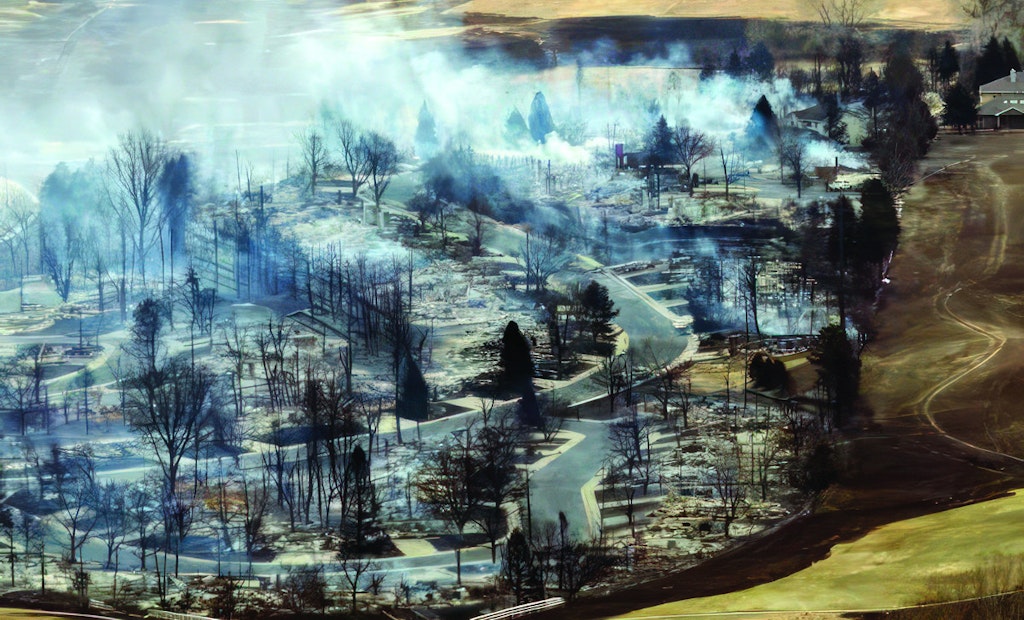Interested in Onsite Systems?
Get Onsite Systems articles, news and videos right in your inbox! Sign up now.
Onsite Systems + Get AlertsIf a customer contacts you fearing their property with a septic system may be burned in a wildfire, you should recommend they document all septic system components and turn off electricity to the system (if it requires power). After the power is off — and if time allows — the owners or you could wrap control panels, plastic risers and lids with flame-resistant sheet plastic to protect them during the wildfire.
Suppose you have customers whose property was burned due to a wildfire. In that case, there are many items to consider and steps to take to ensure the property will have proper wastewater treatment.
The first step is locating the system components. This typically will start by contacting the permitting authority, such as the county, to get a copy of the septic records on file. If the records are unavailable, and the property owner is unaware of their location, you will need to locate them as it is essential to protect the components before demolition activities occur. Demolition activities must stay off the septic system components, or structures may be damaged, and the soil treatment area may be compacted, impacting performance. Ropes or fencing should be installed to prevent traffic.
The next step will be determining if any septic system components were damaged, and many jurisdictions will require an official inspection report. This step may need to occur soon after the fire for insurance purposes or may occur when a plan is developed for how the property will be rebuilt.
Typically the underground components of the septic system are unharmed by wildfire. But components at or near the surface need to be evaluated. During this process, you will want to open all parts of the system where there is access. Evaluate the pipe from the structure, associated clean-outs, septic tanks and other pretreatment devices. The heat may have damaged PVC piping and other plastic/fiberglass components above or near the ground and need careful evaluation. This includes plastic risers and lids.
CHECKING SYSTEMS
The fire may damage pumps, wiring, aerobic treatment units and media filter components, impacting the system’s functioning. The wiring at the top of junction boxes may be burned if the fire was in close proximity. Damage to electrical wires, controls, pipes, tanks and other components of these systems may affect system performance and proper treatment of wastewater. Be very careful around damaged wiring due to the potential for electrical shock. Turn off the power if there are connection concerns.
The evaluator should determine if there is evidence of vehicle traffic over the system or damage to shallow soil treatment components. This may be an excellent time to run a load test of water through the system to ensure the effluent moves through all the components and the system performs as designed.
Any damaged components may need to be replaced, but this is the time to determine if the existing system will serve the needs of the new home or structure that will be built. Suppose the new design includes additional square footage or an altered floor plan with extra bedrooms. In that case, the septic system may need to be further evaluated to ensure that the system can accommodate the proposed changes.
If the structure’s location is moving, it may be challenging to route the wastewater to the existing system directly. This could result in the need for a lift station or an entirely new system. When a new home is being built, many jurisdictions may require replacing old systems that were previously functioning. Cesspools are an excellent example of an outdated system that should be replaced when the new structure is built.
In areas where advanced pretreatment is needed, for instance, for nitrogen reduction, the new permit may require additional technology, increasing the cost of the replacement system.
VERMIN AND VEGETATION
Often, a long time passes between a fire and the structure being rebuilt and the existing system seeing use. Depending on the location and type of septic system, burrowing animals can create problems. Typically, they do not create a situation in systems that receive sewage, but without the wastewater going out, animals may find systems without gravel a nice place to reside.
The typical solution to deal with gophers, moles and other burrowing animals is using traps, poison or a small pellet gun. Also, keep in mind that wildfires will typically reduce the infiltration of rainwater into the soil. If the vegetation over the soil treatment area was burned, it may impact the soil.
The greater the intensity of the heat, the more impermeable the soil surface will become. Although typically only a couple of inches thick, this crust on the soil surface can significantly decrease the recovery of plants as well as promote severe erosion of the site. Look for signs of erosion, such as loss of soil or gullying, and take steps to divert drainage around your soil treatment area. Bales of straw will provide temporary relief, but lightly scarifying the soil and reseeding with grass is necessary to help anchor the soil.






